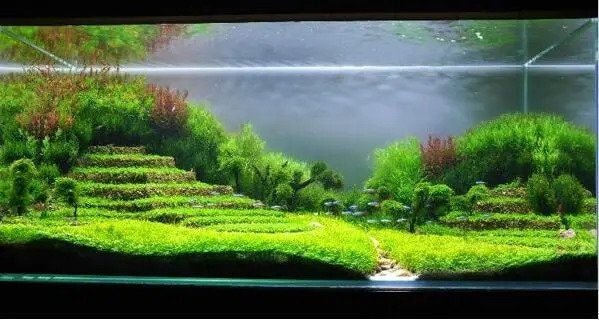How to Plant Carpet Plants in an Aquarium
In this article, we want to explain the simplest planting methods—and caring for a beautiful green carpet in your planted tank. Planting carpet plants is not as difficult as it may seem with a few straightforward steps.
One of the most common mistakes among enthusiasts is related to the roots and the growth of the plants. A common error is letting the carpet plants grow too tall, which, when trying to create a dense carpet, can be frustrating and often leads to the carpet being replaced by some typical foreground plants.
Glossostigma elatinoides (Glosso) is a great carpet plant found in New Zealand swamps, known for its ability to spread and cover an area effectively.
Hemianthus callitrichoides (HC Cuba) is typically used for carpeting in planted tanks due to its small size. It creates a beautiful carpet but can be one of the most challenging plants to grow successfully.
Dwarf Hairgrass (Eleocharis acicularis) looks fantastic in a carpeted aquarium. It's a fast-growing plant that requires trimming almost every week. It gives the appearance of a beautiful lawn, transforming any planted tank.
To successfully plant aquarium carpet plants or aquatic plants, a nutrient-rich substrate is usually used. Planting without the right substrate can cause root issues, affecting the spread of carpet plants. Aquarium carpet plants are often low, and they don't draw nutrients from the water column but rather take up more nutrients through their roots from the substrate. All good aquarium carpets have a very compact root structure beneath.
Another key element for success is providing sufficient CO2 and an effective lighting unit. With a timer, you can easily create a stable and consistent daily pattern for both lighting and CO2, making it easier for your carpet and the entire aquarium to grow healthily. A popular routine is to turn on your CO2 one hour before your lights and turn it off one hour before your lights go off. This ensures maximum CO2 during the so-called "photo period" (when the lights are on).New lateral growth is dense, quickly spreading almost in a mesh-like pattern and rapidly filling the space. Maintenance
Regular maintenance of the aquarium carpet doesn't take much time. Trimming takes only five minutes, and collecting clippings takes two to three minutes.
For most carpet plants, trimming is relatively simple (and very satisfying) if they are well-rooted. Using curved aquascaping scissors allows you to effectively shorten and shape any carpet plant. Additionally, decorations that float on the surface of the aquarium are easy to remove since they usually float.
Remember, maintaining a healthy, dense carpet isn't easy. Patience is essential, and time must be given for any achievements. CO2 is highly recommended for optimal conditions. This applies to most foreground plants as they are usually shorter and require intense lighting. Essentially, they often need more care and attention. If you prefer to keep a low-tech tank, it's suggested to avoid carpet plants and plant smaller species more suitable for low-tech setups like Java Moss and Anubias. Creating a dense and visually appealing carpet is not easy, as carpet plants are typically fragile. However, once they establish roots, regular trimming becomes much easier. Fertilizing with micronutrients combined with CO2 will reward you with a green and beautiful foreground.



















































































































